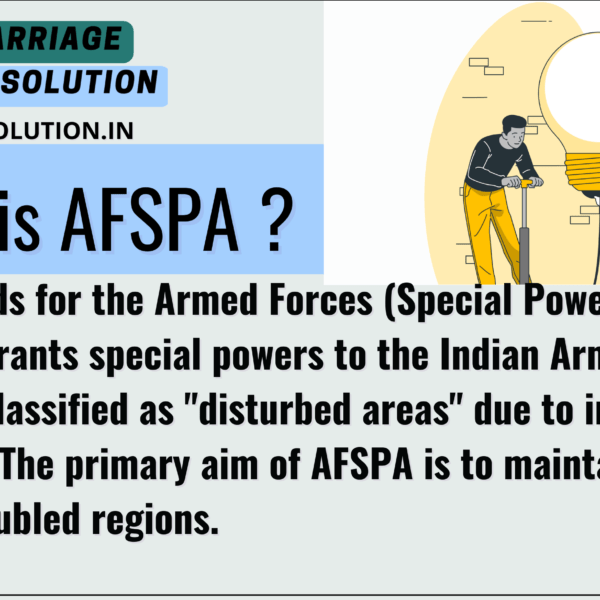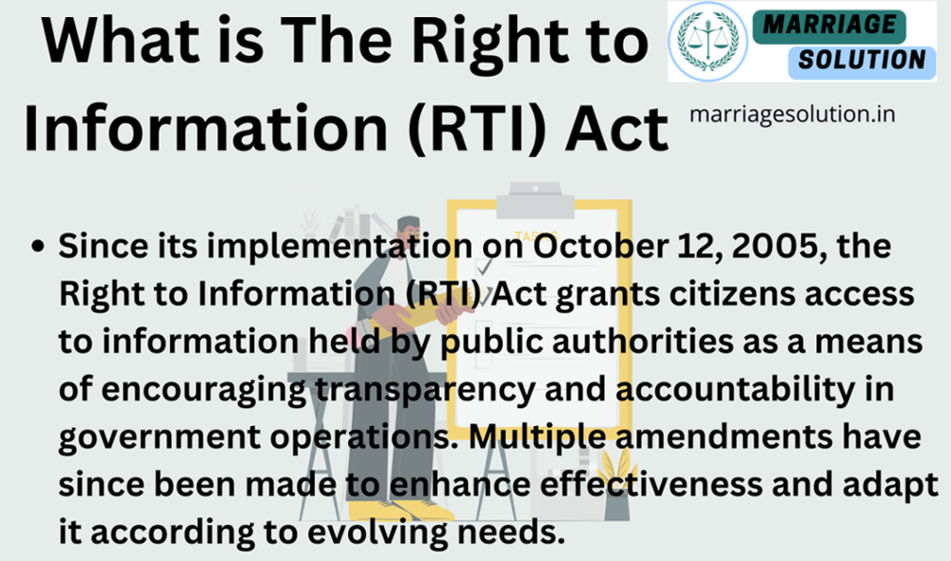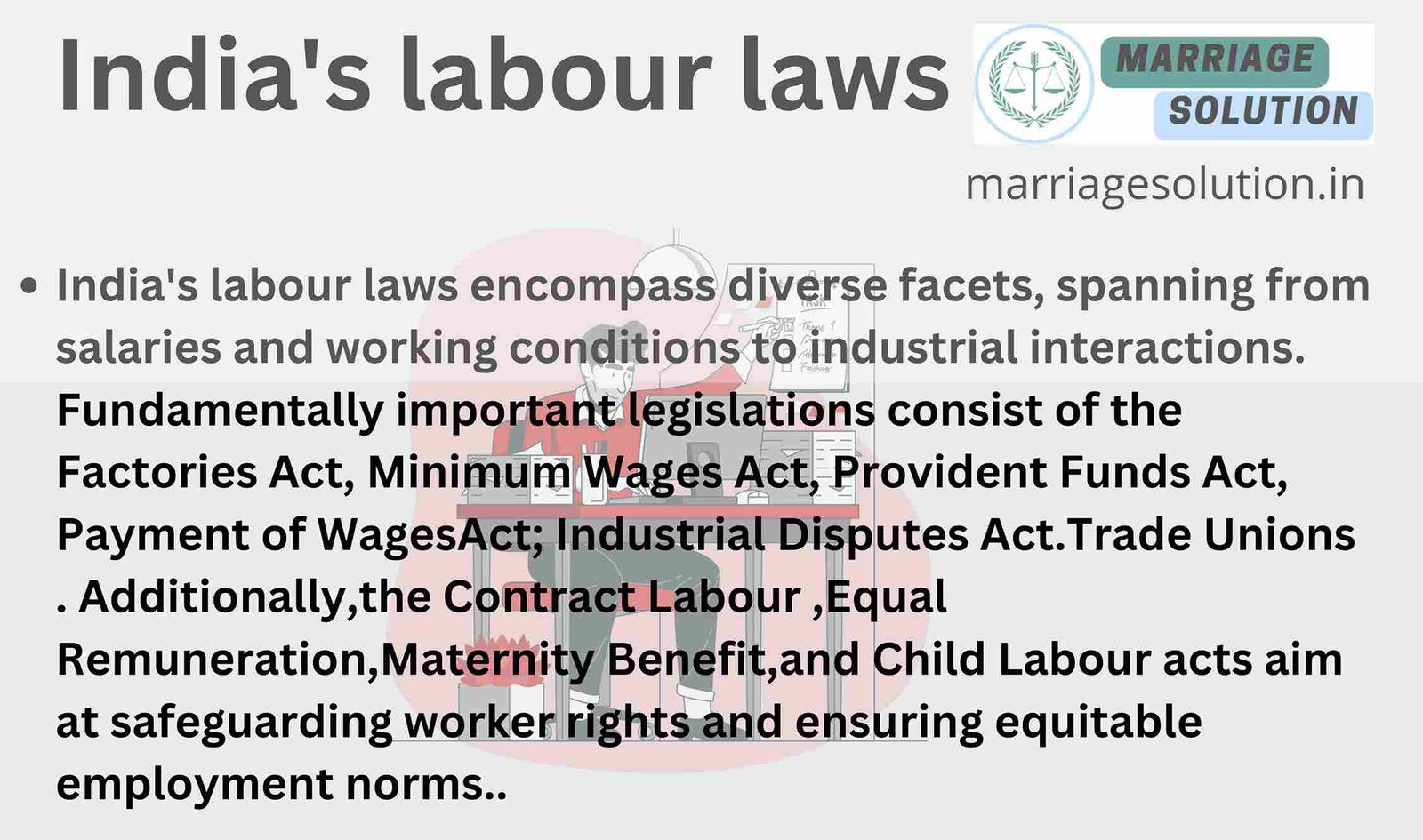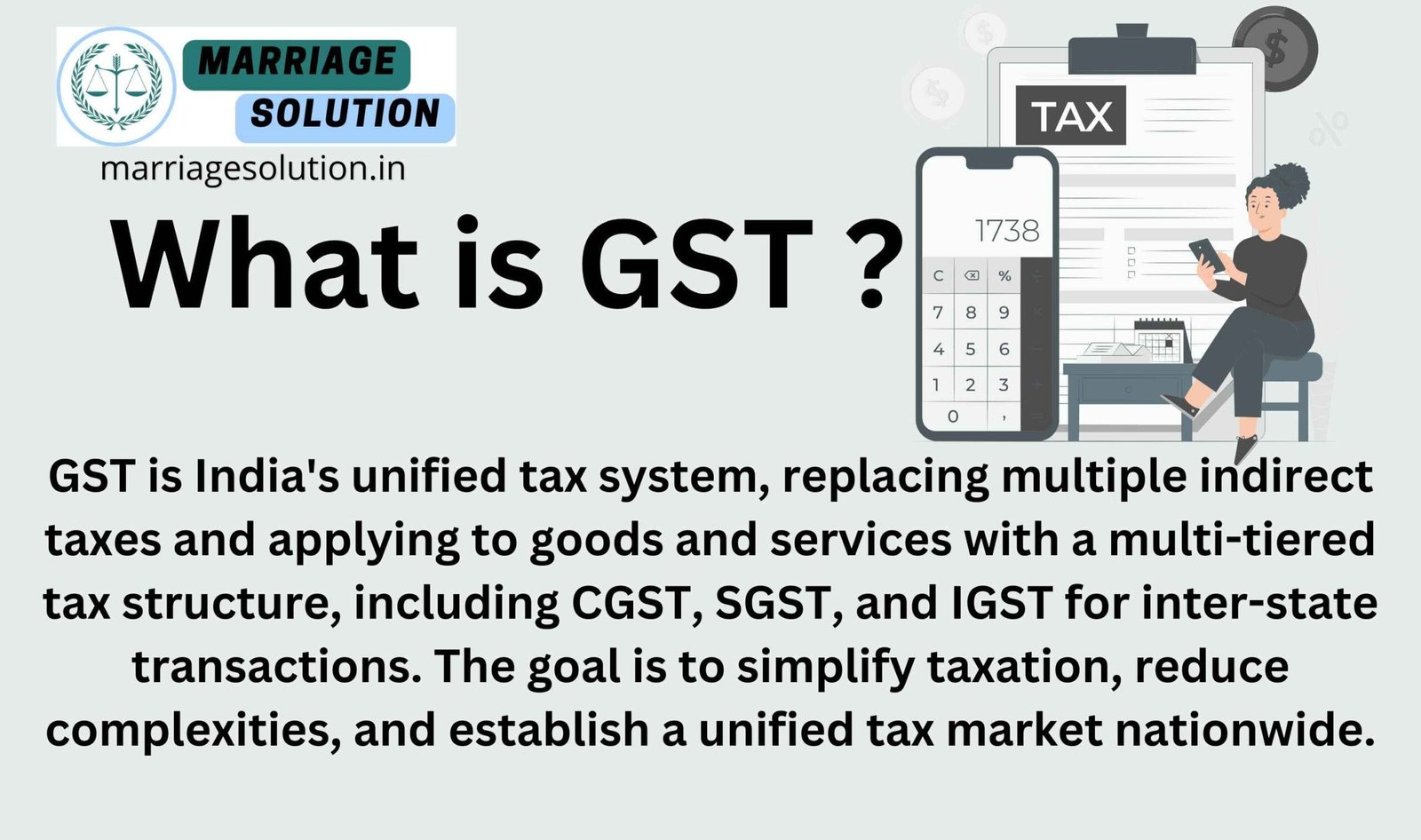Introduction of 146 IPC
Section 146 of the Indian Penal Code (IPC) deals with rioting, which happens when an unlawful assembly turns violent. This law addresses the point where a troublesome crowd becomes dangerous, causing harm or damage. IPC 146 is crucial for maintaining public order and safety by defining when a gathering crosses into criminal behavior. Understanding this law helps both citizens and law enforcement recognize the serious consequences of group violence.
- Introduction of 146 IPC
- What is IPC Section 146 ?
- Section 146 IPC in Simple Points
- IPC Section 146 Overview
- 2. Use of Force or Violence
- 3.Common Purpose of the Riot
- 4.Individual Responsibility
- 5.Disturbance of Public Order
- 6.Difference Between Protest and Riot
- 7.Level of Violence Required
- 8.Awareness and Intent
- 9.Punishment for Rioting
- 10.Role of Law Enforcement
- Example 1: A Protest Turns Violent
- Example 2: A Fight Between Two Groups
- 146 IPC Punishment
- 146 IPC bailable or not ?
- Section 146 IPC case laws
- Section 146 IPC in short information
- 146 IPC FAQs
- If you need support with court proceedings or any other legal matters, don’t hesitate to reach out for assistance.
What is IPC Section 146 ?
IPC Section 146 applies when a group of people gathers illegally and starts using force or violence. If a peaceful protest turns into a violent crowd that damages property, attacks people, or fights with the police, it is considered rioting. Even if a person does not directly hit or break anything, they can still be punished if they stay in the group. The law helps control mob violence and protect public safety.

Section 146 IPC in Simple Points
1. Rioting Happens When a Crowd Turns Violent
A group of people standing together is not a crime, but if they start using physical force, it becomes rioting. This includes breaking windows, setting things on fire, or attacking someone. The law does not allow any kind of violence in public places.
2. Everyone in the Violent Group is Responsible
Even if a person does not personally attack or destroy anything, they can still be punished for being part of the violent crowd. If they stay and support the group, they are guilty of rioting.
3. Rioting Disturbs Public Peace
Riots cause fear, harm people, and damage property. The police must act quickly to stop riots and protect people. That is why strict punishment is given to those involved in rioting.
4. Difference Between Protest and Riot
A peaceful protest is legal, but if the group starts fighting, breaking things, or blocking roads forcefully, it becomes rioting. The moment a crowd uses physical violence, they break the law.
5. Punishment for Rioting
If a person is found guilty of rioting under IPC 146, they can be sent to jail for up to two years, fined, or both. If weapons like sticks, swords, or guns are used, the punishment is even more serious under IPC 148.
IPC Section 146 Overview
IPC Section 146 defines rioting as an unlawful assembly that resorts to force or violence to achieve its goal. If a group of people gathers with a common unlawful purpose and starts using physical aggression, all members can be held responsible, even if they didn’t personally participate in the violence. This law is meant to prevent mob violence and ensure public safety.
IPC Section 146: Rioting – Detailed Explanation with 10 Key Points
1.Link to Unlawful Assembly
Rioting is a more serious form of unlawful assembly under IPC 141. If a group starts with an illegal intent and later turns violent, it becomes a riot under IPC 146. Even if the violence was not planned initially, the group is still responsible once force is used.
2. Use of Force or Violence
For an act to be considered rioting, there must be actual physical force, such as attacking individuals, destroying property, or setting fire to vehicles. Simply gathering or shouting slogans does not count as rioting unless it escalates to physical aggression.
3.Common Purpose of the Riot
The violence must be related to the common goal of the assembly. If a mob gathers to protest and a section of the group starts vandalizing shops or attacking police, the entire group can be held guilty of rioting if they support or encourage such actions.
4.Individual Responsibility
Even if a person does not directly engage in violence, they can still be charged under IPC 146 if they are part of the unlawful assembly. If someone stays in a violent crowd and does nothing to leave or stop the violence, they are legally considered a rioter.
5.Disturbance of Public Order
Rioting is considered a major threat to public peace and safety. It not only causes physical harm and property damage but also spreads fear among people. This is why law enforcement acts quickly against riots to prevent the situation from getting worse.
6.Difference Between Protest and Riot
A peaceful protest is legal, but if it turns violent, it becomes rioting under IPC 146. For example, if a group gathers to protest but then starts breaking windows, burning vehicles, or attacking officers, it crosses the line into rioting.
7.Level of Violence Required
Even minor acts of violence, such as pushing, throwing stones, or breaking barricades, can qualify as rioting. The law does not require large-scale destruction for a charge under IPC 146—any form of physical aggression by a group is enough.
8.Awareness and Intent
A person cannot claim ignorance if they knowingly stay in a violent crowd. However, if someone is forced to stay or was unaware of the violence, they may not be held guilty. Courts consider individual intent and knowledge while deciding punishment.
9.Punishment for Rioting
Rioting is punishable with up to two years of imprisonment, a fine, or both under IPC 146. If deadly weapons are used, the punishment increases under IPC 148. This strict approach helps in controlling mob violence effectively.
10.Role of Law Enforcement
The police have the power to disperse unlawful gatherings before they turn into riots. They use methods like warnings, tear gas, water cannons, or arrests to prevent escalation. The goal of IPC 146 is to ensure law and order while allowing lawful demonstrations.
Example 1: A Protest Turns Violent
A group of people gathers to protest against a government decision. The protest is peaceful at first, but later, some people start throwing stones at police and setting fire to buses. Even those who did not throw stones but stayed in the violent crowd can be charged with rioting under IPC 146.
Example 2: A Fight Between Two Groups
Two groups of people fight over a land dispute. They attack each other, destroy property, and injure bystanders. Since they used physical force as a group, this is considered rioting under IPC 146, and all participants can be punished.
146 IPC Punishment
Imprisonment: If found guilty, you could face imprisonment for up to two years.
Fine: The court can also impose a fine, with the amount decided by the judge based on the damage caused and your ability to pay.
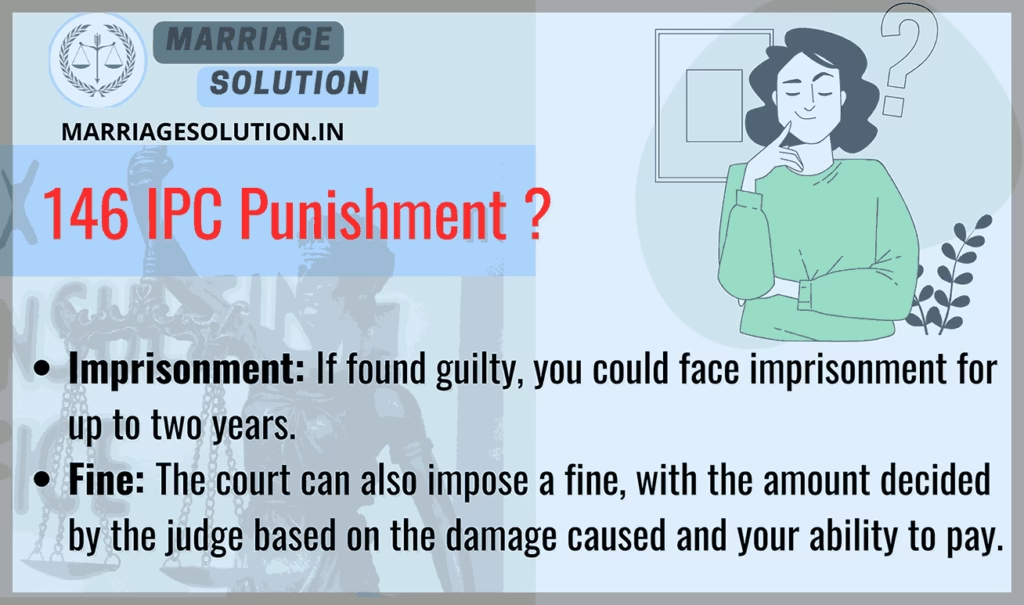
146 IPC bailable or not ?
IPC 146 is generally a non-bailable offense, meaning you don’t have an automatic right to bail. You’ll need to apply to the court, and the judge will decide based on factors like the severity of the violence and your role in the riot. Courts often deny bail in the early stages of rioting cases due to the serious threat to public safety.
Section 146 IPC case laws
1. Ramchandran vs State of Kerala (1966)
- Case Overview: Ramchandran and others were charged under IPC 146 for participating in a riot.
- Common Object: The court emphasized the need for a common object, stating that the assembly must have a shared unlawful goal.
- Use of Force: It was established that the use of force by the assembly, even by a few members, constituted rioting.
- Membership in Assembly: Presence in the assembly alone was insufficient; participation or intention to participate in violence was necessary.
- Legal Precedent: The case set a precedent for interpreting “use of force” in the context of rioting.
- Prosecution’s Burden: The burden was on the prosecution to prove that the assembly had a common unlawful object.
- Defense Argument: The defense argued that the accused were not aware of the common object, which the court rejected.
- Judgment: The court convicted the accused, emphasizing their active participation.
- Significance: This case clarified the interpretation of “common object” and “use of force.”
- Legal Impact: It is frequently cited in cases involving unlawful assemblies and riots.
2. Moti Das vs State of Bihar (1954)
- Case Overview: Moti Das and others were accused of rioting under IPC 146.
- Presence vs. Participation: The court ruled that mere presence in an unlawful assembly where violence occurs can result in a conviction.
- Unlawful Assembly: The definition and criteria for an unlawful assembly were examined in detail.
- Force Used by Assembly: The court looked into whether the force was used in pursuit of the common object.
- Knowledge and Intention: The requirement of the accused knowing the assembly’s unlawful nature was stressed.
- Evidence: The prosecution provided evidence that the accused were part of the violent acts.
- Common Object Proof: Proof of the common object was crucial for the conviction.
- Judgment: The court found the accused guilty of rioting.
- Legal Interpretation: The case provided a broad interpretation of participation in riots.
- Impact: It reinforced the principle that being part of an unlawful assembly can lead to rioting charges.
3. Munivel vs State of Tamil Nadu (2003)
- Case Overview: Munivel and others were charged under IPC 146.
- Unlawful Assembly and Violence: The court focused on the assembly’s transition from unlawful gathering to rioting.
- Common Object: Establishing the common object was critical.
- Participation Evidence: Evidence was presented showing the accused’s active participation.
- Force Usage: The court examined the type and extent of force used.
- Legal Definitions: Definitions of “unlawful assembly” and “rioting” were scrutinized.
- Defense’s Argument: The defense argued lack of knowledge about the unlawful intent, which was dismissed.
- Judgment: The court convicted the accused based on solid evidence of participation.
- Significance: The case highlighted the prosecution’s role in proving the common object and use of force.
- Impact: It is a reference for cases involving clear evidence of rioting.
4. Hulikal Nataraju vs State of Karnataka (1995)
- Case Overview: Hulikal Nataraju was charged under IPC 146 for alleged rioting.
- Presence and Participation: The court ruled that mere presence without active participation does not constitute rioting.
- Intent to Participate: The accused must have intended to participate in the violence.
- Evidence Requirement: Strong evidence of the accused’s involvement was necessary.
- Unlawful Assembly Definition: The court reiterated the need for a common unlawful object.
- Legal Clarification: Clarified the difference between passive presence and active participation.
- Defense’s Success: The defense successfully argued that Nataraju did not participate in the violence.
- Judgment: The court acquitted Nataraju due to lack of evidence of participation.
- Significance: The case emphasized the need for clear evidence of participation.
- Impact: It serves as a reference for distinguishing between presence and participation in riots.
5. Jai Narayan Misra vs State of Bihar (1972)
- Case Overview: Jai Narayan Misra was accused of rioting under IPC 146.
- Common Intent: The court focused on the necessity of common intent among the assembly members.
- Force and Violence: Evidence of the use of force by the assembly was examined.
- Proof of Intent: The prosecution had to prove the shared intent of the assembly.
- Individual Acts: The court noted that individual acts could implicate the whole group if there was a common intent.
- Defense’s Argument: The defense argued the lack of common intent, which was rejected.
- Judgment: Misra was convicted based on the common intent and use of force.
- Significance: The case highlighted the importance of proving common intent.
- Legal Precedent: It set a precedent for evaluating common intent in rioting cases.
- Impact: It is frequently cited in cases where proving common intent is crucial.
6. Ramanand Yadav vs State of Bihar (1996)
- Case Overview: Ramanand Yadav was charged under IPC 146 for participating in a riot.
- Knowledge of Unlawful Assembly: The court stressed the need for the accused to know about the unlawful nature of the assembly.
- Participation in Violence: Evidence of Yadav’s active participation was crucial.
- Proof of Knowledge: The prosecution had to prove that Yadav knew the assembly was unlawful.
- Common Object: The assembly’s common object was examined.
- Defense’s Argument: The defense claimed lack of knowledge, which was dismissed.
- Judgment: Yadav was convicted based on the evidence of knowledge and participation.
- Significance: The case emphasized the need to prove the accused’s knowledge of the assembly’s unlawful nature.
- Legal Impact: It is a reference for cases involving knowledge and participation in riots.
- Impact: It serves as a guideline for proving knowledge and participation in rioting cases.
7. Ramesh Kumar vs State of Rajasthan (2010)
- Case Overview: Ramesh Kumar was accused of rioting under IPC 146.
- Spontaneous Violence: The court ruled that spontaneous violence does not necessarily constitute rioting.
- Premeditation Requirement: There must be evidence of premeditated violence for rioting charges.
- Common Object Proof: The prosecution had to prove the common object of the assembly.
- Use of Force: Evidence of the use of force was examined.
- Defense’s Argument: The defense argued that the violence was spontaneous, which was accepted.
- Judgment: Kumar was acquitted due to lack of evidence of premeditated violence.
- Significance: The case clarified the need for premeditation in rioting charges.
- Legal Interpretation: It provided a clear interpretation of spontaneous violence vs. premeditated rioting.
- Impact: It is cited in cases where the nature of violence (spontaneous or premeditated) is in question.
8. State of Maharashtra vs Somnath Thapa (1996)
- Case Overview: Somnath Thapa was charged under IPC 146 for rioting.
- Individual Acts and Group Liability: The court ruled that individual acts of violence could implicate the entire group if a common object is proved.
- Common Object Requirement: The prosecution had to prove the common object of the assembly.
- Evidence of Participation: Evidence of Thapa’s participation was examined.
- Knowledge of Violence: The court emphasized the need for the accused to be aware of the violence.
- Defense’s Argument: The defense argued that Thapa was not aware of the violence, which was rejected.
- Judgment: Thapa was convicted based on the evidence of participation and common object.
- Significance: The case reinforced the principle of group liability in rioting.
- Legal Impact: It is a key reference for cases involving group liability in riots.
- Impact: It serves as a guideline for proving individual participation and common object in rioting cases.
9. Mohammed Yasin vs State of Uttar Pradesh (1983)
- Case Overview: Mohammed Yasin was charged under IPC 146 for participating in a riot.
- Knowledge and Participation: The court stressed the need for the accused to know about the unlawful assembly and participate in the violence.
- Proof of Knowledge: The prosecution had to prove Yasin’s knowledge of the assembly’s unlawful nature.
- Common Object Evidence: Evidence of the assembly’s common object was examined.
- Active Participation: The court looked into Yasin’s active participation in the violence
Section 146 IPC in short information
| IPC Section | Offense | Punishment | Bailable/Non-Bailable | Cognizable/Non-Cognizable | Trial By |
|---|---|---|---|---|---|
| IPC 146 | Rioting (using force or violence in an unlawful assembly) | Up to 2 years in jail, or fine, or both | Bailable | Cognizable | Magistrate |
146 IPC FAQs
What is rioting under IPC 146?
Imagine a protest that turns violent, with people throwing rocks or damaging property. That’s rioting under IPC 146. It’s when a large group uses force to achieve their goal, making it a serious threat to public safety.
How can I get in trouble under IPC 146?
If you’re part of a crowd that gets violent and breaks the law, you can be charged with rioting. Even if you don’t personally use force, being there and supporting the violence can still get you in trouble.
What’s the difference between a protest and rioting?
Peaceful protests are legal. But if a protest turns violent and aims to break the law, it becomes rioting. The key difference is the use of force or violence.
What’s the punishment for rioting?
Rioting is a serious offense with harsher penalties than being in an unlawful assembly. You could face up to 2 years in jail and/or a fine. The exact punishment depends on the severity of the violence and your role in the riot.
If you need support with court proceedings or any other legal matters, don’t hesitate to reach out for assistance.
Court or any other marriage-related issues, our https://marriagesolution.in/lawyer-help-1/ website may prove helpful. By completing our enquiry form and submitting it online, we can provide customized guidance to navigate through the process effectively. Don’t hesitate to contact us for personalized solutions; we are here to assist you whenever necessary!
Right to Information RTI act :Your Comprehensive Guide (Part 1)
The Right to Information (RTI) Act : Explore the essence of the Right to Information (RTI) Act through this symbolic image. The image features legal documents, emphasizing the importance of transparency and accountability in governance. The scales of justice represent…
What is Article 371 of Indian Constitution ?
Article 371 of the Indian Constitution grants special provisions to specific states and regions within India, addressing their unique historical, social, and cultural circumstances. These provisions aim to accommodate diverse needs and protect cultural identities within the constitutional framework.
Indian Labour law : Your Comprehensive Guide (Part 1)
The purpose of labour laws is to safeguard employees and guarantee equitable treatment at the workplace, encompassing aspects such as remuneration, security, and perks. These regulations establish a secure ambiance by imposing minimum wage requirements, ensuring factory safety measures are…
GST :Your Comprehensive Guide (Part 1 – Understanding the Basics)
The Goods and Services Tax (GST) is like a big change in how we pay taxes in India. It started on July 1, 2017, and it’s here to simplify things. Before GST, we had many different taxes, and it could…

